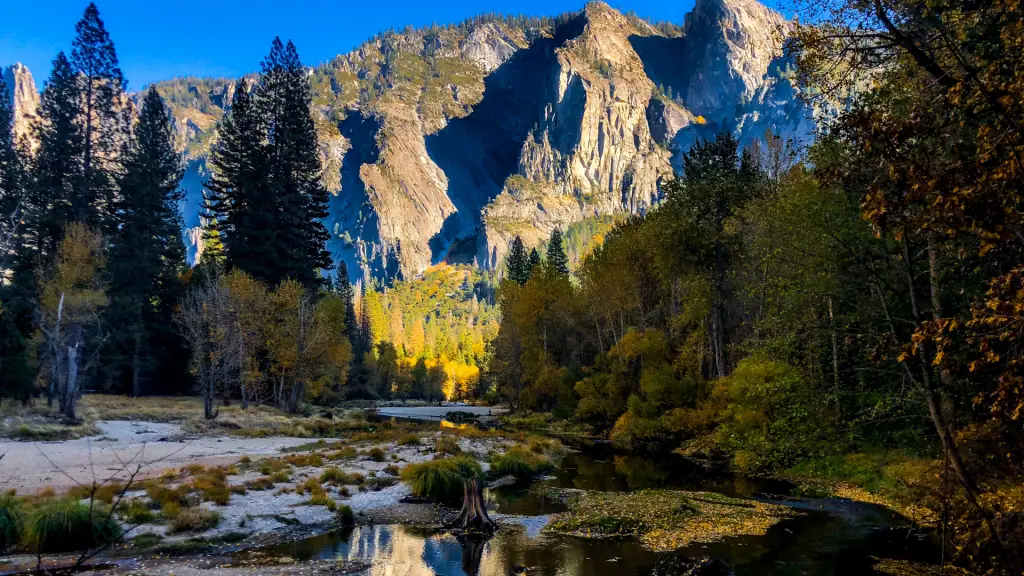Yosemite’s Arboreal Wonders: Embracing the Trees
Yosemite National Park is a world-renowned treasure located in California, USA. However, one of the most striking aspects of the park is its magnificent trees.

Yosemite is home to some of the largest, oldest, and most impressive trees in the world. Everything of importance about the trees in Yosemite National Park, showcasing their beauty, ecological importance, and fascinating history needs to be taken into consideration.
Kind of trees
Yosemite has a huge variety of trees, with over 20 different species found in the park. Some of the most iconic trees in the park are the Giant Sequoias, one of the world’s tallest and largest species of trees. The sequoias are present in the Mariposa Grove, which is one of the park’s most popular attractions. These giants can reach an impressive height of up to 300 feet (91.44 m), and almost 30 feet (9.14 m) in width! They are able to live for over 3000 years, and their enormous size makes them a cornerstone of Yosemite’s ecosystem. Other trees found in the park include the Lodgepole Pine, White Fir, and Western Juniper.
Most common tree to encounter
The most common tree species found in Yosemite National Park is the Red Fir. The Red Fir is mainly located in the high-altitude areas of the park. It can reach a height of about 200 feet (60.96 m), and is known for its bark that is smooth and grayish-brown. In the fall, the Red Fir’s stunning golden leaves give it a unique appearance, which is a sight to behold.

Interesting information about the trees in Yosemite
The trees in Yosemite are not only aesthetically pleasing, but they also play a crucial role in the park’s ecology. Forests act as an important regulator of Earth’s climate by removing carbon dioxide from the atmosphere through photosynthesis and storing it in their biomass. The trees in Yosemite also provide a home for numerous species, including birds, insects, and mammals. Furthermore, Yosemite’s trees have a fascinating relationship with fire, as many species require fire for their seeds to germinate.
Another interesting detail about a specific kind of tree in Yosemite is that the bark of Sequoia trees can be up to 2 feet (0.61 m) thick. This thick bark helps protect the tree from fires and pests. A new additional fact is that the Lodgepole pine grows in such dense forests, that they have no room to spread their branches outwards. As a result, the Lodgepole pine’s branches grow upwards, creating a tall, thin, spindly tree that is unique in its appearance.
Regular questions about the trees in Yosemite National Park
What is the most famous tree in Yosemite?
The most famous tree in Yosemite National Park is undoubtedly the iconic “Grizzly Giant.” This ancient Giant Sequoia, located in the Mariposa Grove, is estimated to be around 1,800 to 2,400 years old. Standing at about 209 feet (63.7 m) tall with a base circumference of 28 feet (8.53 m), the Grizzly Giant is an awe-inspiring testament to the longevity and size these species can achieve. Its massive branches, some of which are almost 7 feet (2.13 m) in diameter, and its characteristic burnt orange bark make it a popular highlight for visitors.
What is the largest tree in Yosemite?
The largest tree in Yosemite National Park is located in the Mariposa Grove, and it’s a Giant Sequoia known as the “Washington Tree”. This colossal tree was once known as the largest tree in the world in terms of total volume. However, it has lost this title over the years due to natural factors such as storms and fires. Despite this, the Washington Tree remains one of the most impressive sights in Yosemite, standing as a towering testament to the grandeur and resilience of nature.
Which is the best season to admire the trees in the Yosemite National Park?
Yosemite National Park is a year-round spectacle, each season offering its own unique perspective on the park’s majestic trees. However, many visitors find the late spring and early summer to be particularly enchanting, the Giant Sequoias are a sight to behold during these months, their lofty canopies teeming with life. If visiting in the fall, expect a captivating display of autumn colors, particularly from the park’s deciduous trees like the Black Oaks. In winter, a dusting of snow adds a layer of pristine beauty to the landscape. Ultimately, the best season to admire the trees in Yosemite National Park depends on the individual’s preference.

Conclusion
In conclusion, the trees of Yosemite National Park are a stunning natural wonder that should not be missed. From the towering Giant Sequoia trees to the beautiful fall foliage of the Red Fir, the range of species is magnificent. If you are a nature lover or an outdoor enthusiast, you should consider visiting this park to witness the beauty of these trees. Not only do they provide a picturesque view, but they are also crucial for the ecosystem and provide a home for countless wildlife species. The trees in Yosemite are truly a natural treasure that everyone should experience at least once in their lifetime.







